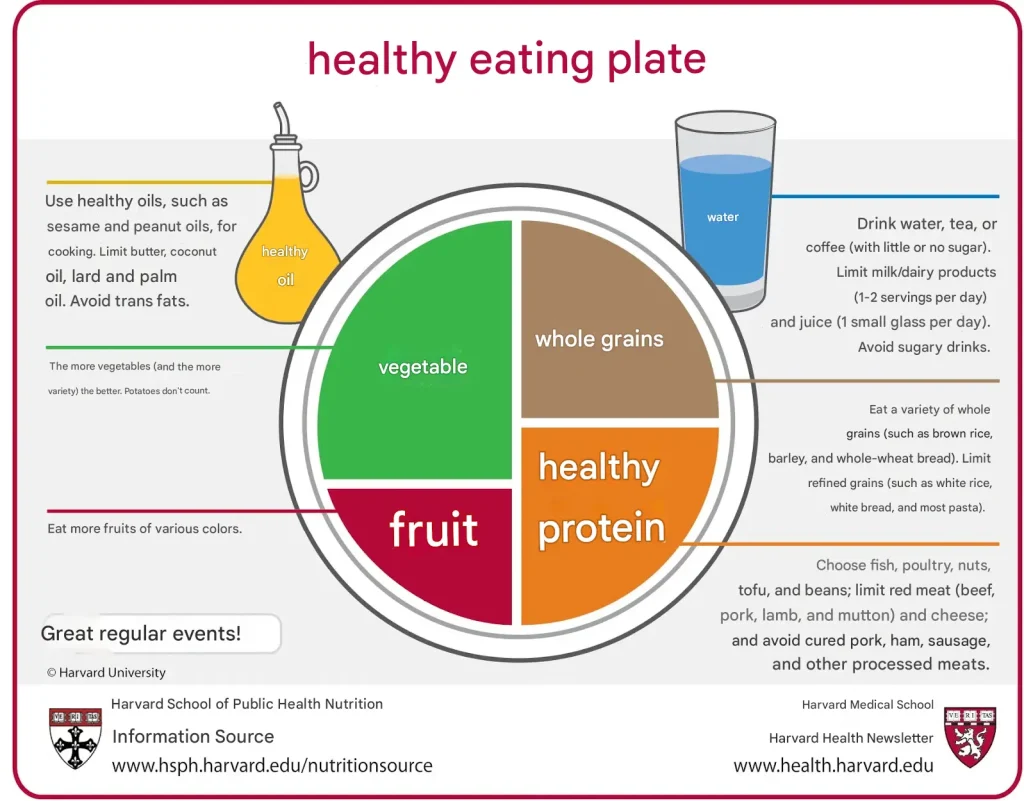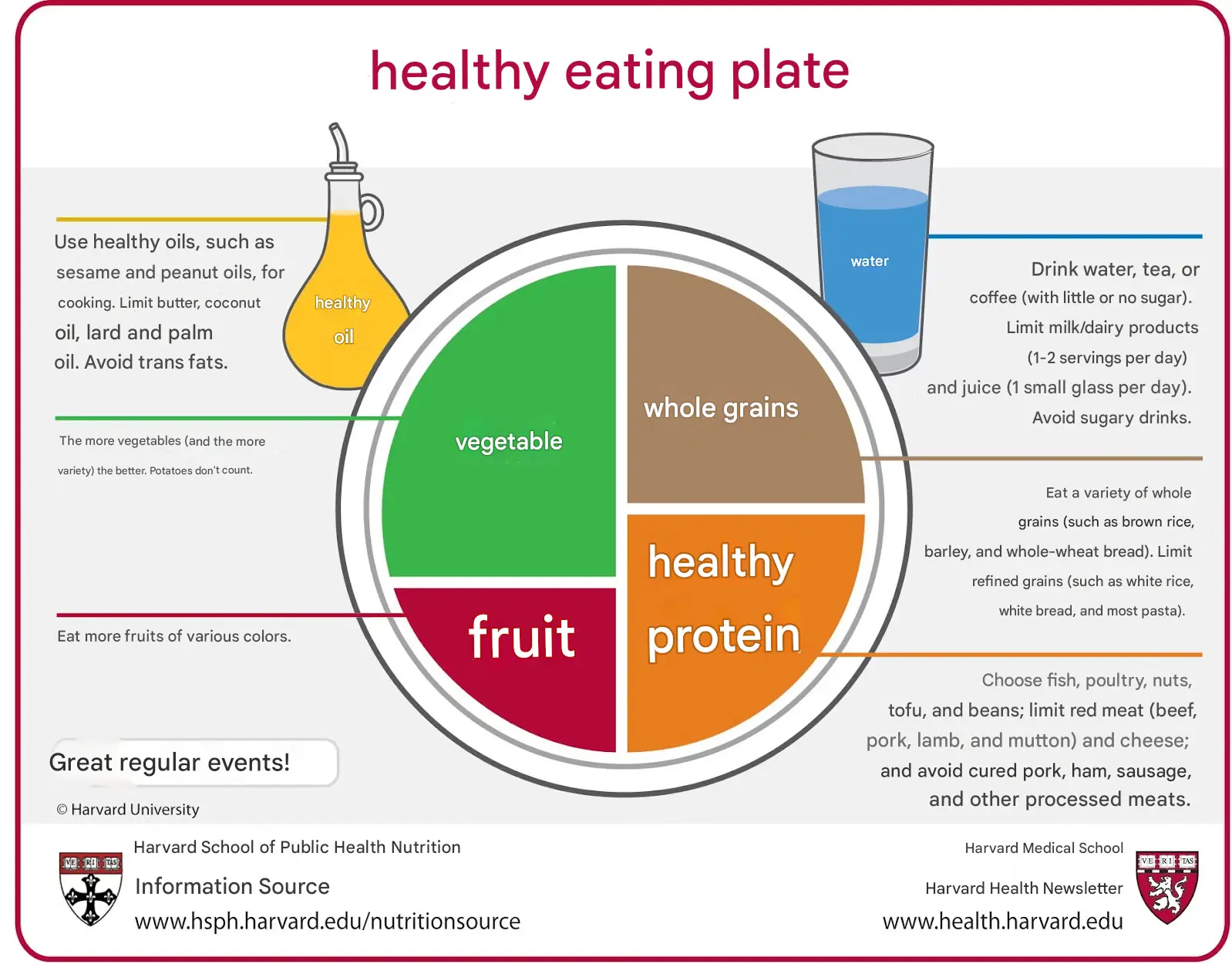
The Healthy Eating Plate was created by nutrition experts at the Harvard T.H. Chan School of Public Health and editors at Harvard Health Publications to help you plan a balanced, nutritious meal—whether it’s served on a plate or packed in a lunchbox. Posting this guide on your fridge can serve as a daily reminder to make healthier food choices!
1. Vegetables and Fruits – Fill Half Your Plate
- Make vegetables and fruits the largest portion of your meal, taking up half of your plate.
- Focus on variety and color—include leafy greens, colorful peppers, and seasonal fruits.
- Keep in mind that potatoes are not considered vegetables on the Healthy Eating Plate because they can cause spikes in blood sugar levels.
2. Whole Grains – Fill a Quarter of Your Plate
- Choose whole grains like whole wheat, quinoa, brown rice, oats, and barley.
- Whole grains are better for maintaining stable blood sugar levels compared to refined grains like white bread and white rice.
- Avoid processed grains, as they have a higher glycemic index and offer fewer nutrients.
3. Protein – Fill a Quarter of Your Plate
- Include healthy protein sources such as fish, poultry, beans, and nuts.
- Combine them with vegetables for a well-balanced meal.
- Limit consumption of red meat and avoid processed meats like bacon and sausage, which can increase health risks.
4. Use Healthy Plant Oils – In Moderation
- Opt for healthy plant oils like olive oil, canola oil, sunflower oil, and peanut oil.
- Avoid partially hydrogenated oils that contain harmful trans fats.
- Remember: “Low fat” does not always mean “healthy.” Focus on quality rather than fat content alone.
5. Drink Water, Coffee, or Tea
- Stay hydrated with water throughout the day.
- Limit sugary drinks and keep milk and dairy intake to 1-2 servings per day.
- If you enjoy coffee or tea, avoid adding too much sugar or sweeteners.
- Keep fruit juice consumption minimal—no more than a small glass per day due to its high sugar content.
6. Stay Active
- The red figure running at the bottom of the Healthy Eating Plate is a reminder to stay physically active.
- Regular exercise is essential for managing weight, improving mental health, and boosting overall well-being.
Key Takeaways from the Healthy Eating Plate
✅ Diet quality matters more than calorie counting – Focus on whole, nutrient-dense foods rather than tracking every calorie.
✅ Type of carbohydrates matters – Choose complex carbs like whole grains, legumes, and vegetables over refined carbs.
✅ Avoid sugary drinks – They provide empty calories with little nutritional value.
✅ Use healthy fats – Don’t fear fats from natural sources like nuts, seeds, and avocados—they’re beneficial for heart health.
Why the Healthy Eating Plate Works
This simple yet effective guide helps you create balanced meals that promote long-term health and better energy levels. By focusing on whole foods, balanced portions, and healthy fats, you can support weight management, improve digestion, and boost your overall health.

